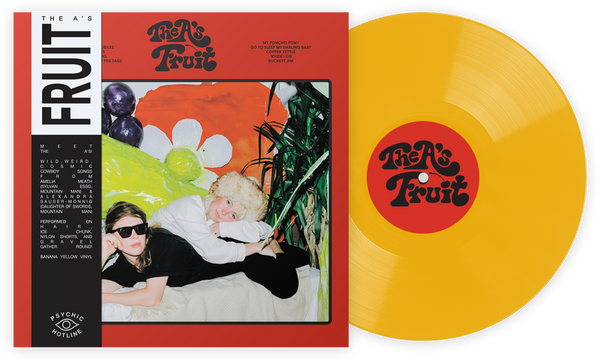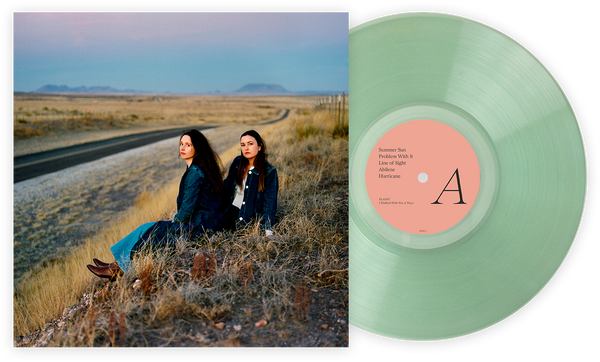Tidak ada yang bertahan selamanya: Kebangkitan dan kejatuhan singkat Witch House
Tidak ada yang abadi, tetapi kebanyakan hal bahkan tidak bertahan sama sekali. Mengingat komunikasi cepat dalam budaya daring, genre musik independen dapat ditemukan, mendapatkan momentum, menjadi trend, kehilangan momentum, dan menjadi lelucon dalam satu kasus hukum Soundcloud. Tetapi di tengah kurva artistik itu, bisa terasa seolah setiap artis baru yang dipublikasikan di Pitchfork atau mendapatkan gigs di Fader Fort membawa setidaknya sebagian dari DNA yang sama dari lagu-lagu mati yang berjalan ini. Kolom ini mengeksplorasi kenaikan dan kejatuhan eksperimen dalam cawan Petrie ini yang tampaknya pernah mengancam untuk menghasilkan pertumbuhan liar tetapi akhirnya membakar habis.
One of the more notorious examples of this phenomenon in the recent past--and the perfect genre to launch this column with-- was witch house, a subgenre defined by dark and woozy electronics that found traction in early 2010. Even while it was becoming popular, witch house was looked at as a bit of a goof. Its sound was so dour and serious, lacking any light or humor, that it was easy to poke fun at. As time has separated us from its fleeting popularity, that perspective on witch house is the one easiest to view.
That view isn't entirely off-kilter. Witch house did often sound self-serious, especially from its most prominent bands. The quintessential example is the group Salem, a Michigan trio who buried their lyrics behind thick, syrupy blankets of B-horror synths. But in the spaces where those lyrics were decipherable, threats of sexual and fatal violence could be plucked from the din. Even putting aside the moral questionability of creating music that mentions such topics without contextualizing their usage, even a fully and acceptably explained context would fail to categorize Salem's music specifically-- and witch house as a genre by extension-- as light listening.
But what that view ignores a quintessential part of witch house's lifeblood, a part that not only accelerated witch house beyond ghost-and-skeleton gimmickry from the drop but also is why threads of the genre's fabric can still be found woven into modern hits.
The relationship of witch house with hip-hop is one that has been narratively lost in the intervening half-decade, but one that at the time of the genre's fledgling beginnings were oft-touted, sometimes too eagerly, almost as if to say "Look! We're not as sheltered and insular as we might sound!" Some examples include CREEP -- a duo that took heat for lending witch house its extremely uncomfortable “rape gaze” moniker-- citing Nicki Minaj has an influence, and Chris Greenspan of oOoOO (yes, literally the sound a ghost makes) name dropping Ludacris, Young Jeezy, and Usher in an interview with Pitchfork.
But even if you took that cynical view on the hip-hop connection, a cursory listen to the first artists to be slapped with the witch house label would reveal that connection as real. Mid-90s rap, specifically southern rap, really serves as the truest chrysalis for witch house. In fact, one of witch house’s alternative genre names-- "drag"-- was actually a reference to the debt the genre paid to the bass-heavy, molasses slow, “screw” movement pioneered by DJ Screw in Houston during that time period wherein Screw applied his “chopped and screwed” style to a variety of existing rap hits, slowing down their BPMs and cutting and scratching the records in odd places to create a woozy, disorienting style of EQ-rumbling that witch house artists borrowed heavily.
Another direct precursor to witch house’s sound would be Three 6 Mafia. And while they may now be known as “Juicy J’s group that won an Oscar one time” and for their short-lived MTV series Adventures in Hollywood, their early music-- specifically their 95 debut album Mystic Stylez-- spun original productions that mimicked the lethargic drawl of Screw’s work and paired it with their own heavily modulated vocals, ones that shared a tone and ideology with the mid-90s horrorcore phenomenon made famous by groups like Gravediggaz and Flatlinerz. Listening back to the combination of those two influences on Mystic Stylez or to Screw's 90s mixtapes, the influence is undeniable as the foundation of much of witch house.
Different acts built different things on this shared foundation. White Ring constructed towers out of synth sounds. Balam Acab built multi-tenant housing to share space with dubstep and house proper. Salem probably stayed the closest to the original house that Screw built, even slowing down their own voices for analogues to the rap stars that found themselves chopped and screwed. It was through the shared, though ciphered, language of bass-heavy rap that witch house found wider success than if it had just been spooky synths.
And the relationship between hip-hop and witch house became symbiotic. For a parallel example, Spaceghostpurrp's 2011 mixtape BLACKLAND RADIO 66.6 exists somewhere between being directly influenced by Screw and including drag's variations in tone and style. Looking at the intervening years, hip-hop adopted not just the tones and timbres of witch house, but the actual artists themselves. Jack Donoghue of Salem worked on Kanye's "Black Skinhead." Evian Christ-- still signed to the label most closely associated with witch house, Tri Angle Records-- has a contract with West's DONDA publishing house.
Beyond that, new artists with debts to witch house are also becoming mainstays as hip-hop and R&B producers. Arca, who also produced parts of Yeezus and has also worked with Bjork and Kelela, has solo work that heavily recalls the most sonically varied bits from oOoOO or Balam Acab. FKA twigs' first two EPs sound similar to Holy Other's Tri Angle releases. And Boots' work on Beyonce's self-titled record-- particularly on tracks like "Haunted" and "Yonce"-- wouldn't have felt out of place on a 2011 primer mix on the genre.
None of this is necessarily to say that that witch house was underappreciated or ahead of its time. It wasn't either of those things. To many, it came off as overappreciated, an internet-fueled but empty phenomenon that confused darkness for depth, and as for being ahead of its time, it was instead distinctly of its time, an unsympathetic opposing coin side to the nostalgic lo-fi electronic haze to the chillwave that had dominated the internet the year before.
This also isn't even to say that most of the songs labeled as witch house were even very “good.” The best tracks-- Balam Acab's "See Moon," Salem's "King Night," Holy Other's "Held"-- were leagues better than not only similar tracks from lesser groups, but also much better than any other tracks those same artists created. On the album side, Evian Christ's Kings and Them was probably the only full-length release from any witch house-associated act worth listening to front to back, and that record skewed more Screw than drag.
It's no great tragedy that witch house is not a genre unto itself anymore. Aside from a few outliers, the genre was too sonically narrow to become a parent unto itself. But it lives in the same way many remarkable, niche subgenres do: cannibalized by larger genres-- specifically the hip-hop from which it itself was birthed-- and given wider breadth and greater agility to evolve outside the confines of the name which defined it.
Bergabung dengan Klub!
Bergabunglah sekarang, mulai dari 44 $Exclusive 15% Off for Teachers, Students, Military members, Healthcare professionals & First Responders - Get Verified!












